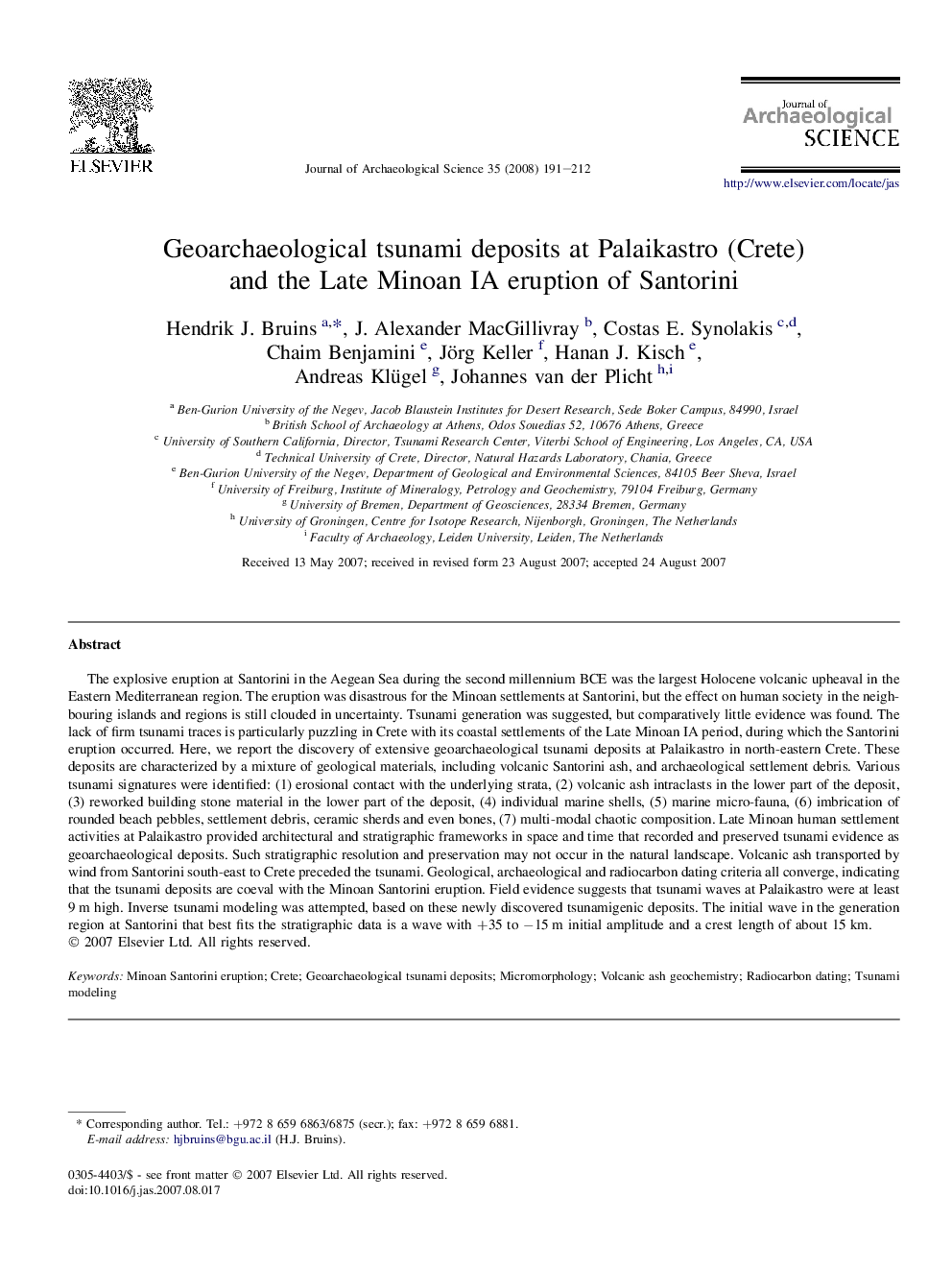| کد مقاله | کد نشریه | سال انتشار | مقاله انگلیسی | نسخه تمام متن |
|---|---|---|---|---|
| 1037109 | 943909 | 2008 | 22 صفحه PDF | دانلود رایگان |

The explosive eruption at Santorini in the Aegean Sea during the second millennium BCE was the largest Holocene volcanic upheaval in the Eastern Mediterranean region. The eruption was disastrous for the Minoan settlements at Santorini, but the effect on human society in the neighbouring islands and regions is still clouded in uncertainty. Tsunami generation was suggested, but comparatively little evidence was found. The lack of firm tsunami traces is particularly puzzling in Crete with its coastal settlements of the Late Minoan IA period, during which the Santorini eruption occurred. Here, we report the discovery of extensive geoarchaeological tsunami deposits at Palaikastro in north-eastern Crete. These deposits are characterized by a mixture of geological materials, including volcanic Santorini ash, and archaeological settlement debris. Various tsunami signatures were identified: (1) erosional contact with the underlying strata, (2) volcanic ash intraclasts in the lower part of the deposit, (3) reworked building stone material in the lower part of the deposit, (4) individual marine shells, (5) marine micro-fauna, (6) imbrication of rounded beach pebbles, settlement debris, ceramic sherds and even bones, (7) multi-modal chaotic composition. Late Minoan human settlement activities at Palaikastro provided architectural and stratigraphic frameworks in space and time that recorded and preserved tsunami evidence as geoarchaeological deposits. Such stratigraphic resolution and preservation may not occur in the natural landscape. Volcanic ash transported by wind from Santorini south-east to Crete preceded the tsunami. Geological, archaeological and radiocarbon dating criteria all converge, indicating that the tsunami deposits are coeval with the Minoan Santorini eruption. Field evidence suggests that tsunami waves at Palaikastro were at least 9 m high. Inverse tsunami modeling was attempted, based on these newly discovered tsunamigenic deposits. The initial wave in the generation region at Santorini that best fits the stratigraphic data is a wave with +35 to −15 m initial amplitude and a crest length of about 15 km.
Journal: Journal of Archaeological Science - Volume 35, Issue 1, January 2008, Pages 191–212